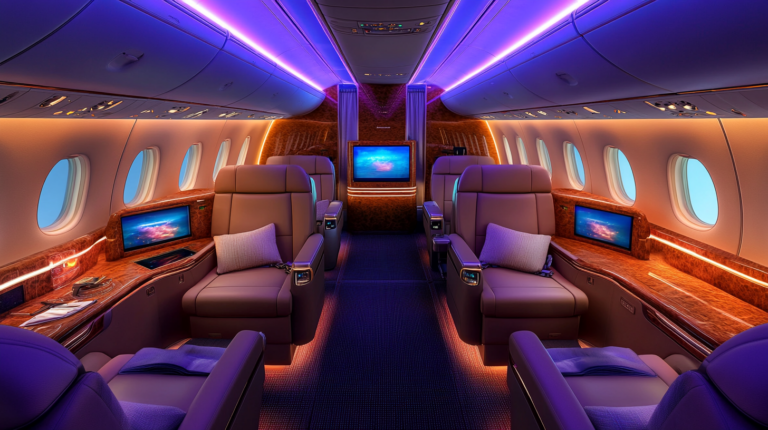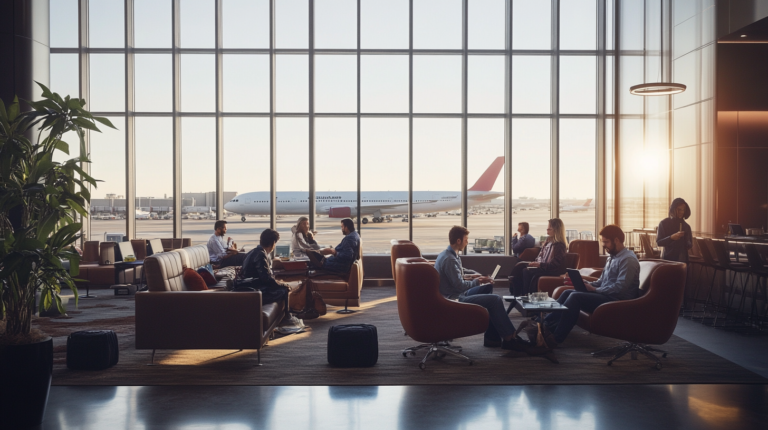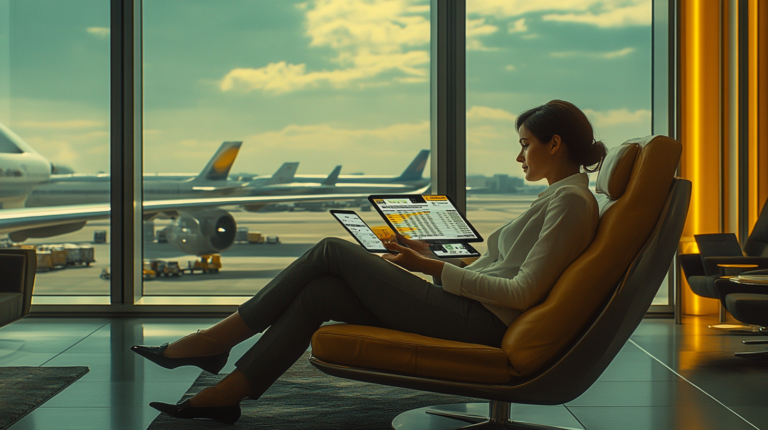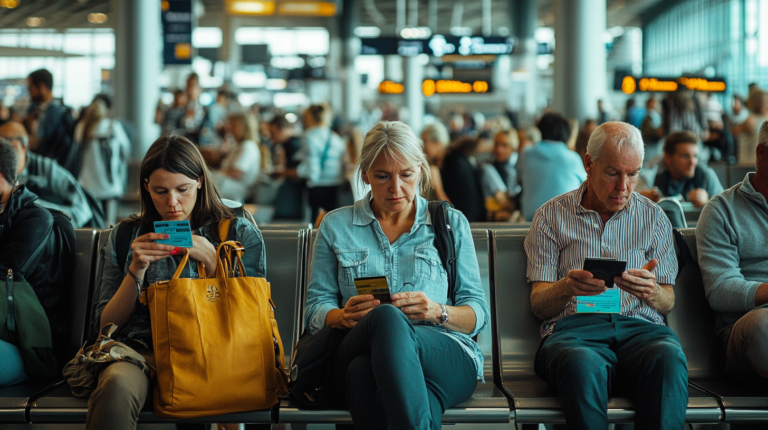Seat Squatters: Unraveling the Troubling Trend in Air Travel
Air travel, a cornerstone of modern connectivity, has never been without its challenges. However, a new and disconcerting phenomenon is causing turbulence among passengers and airline crews alike: seat squatting. This emerging trend, where travelers deliberately occupy seats not assigned to them, is stirring intense debate and discomfort across flights worldwide. From viral social media uproars to stern expert advisories, seat squatting is reshaping conversations about airplane seat etiquette, passenger rights, and the unspoken rules of shared spaces. This issue not only affects individual travelers but also touches upon broader topics like passenger rights in commercial aviation and the dynamics of modern air travel.
The Rise of Seat Squatting

The practice of seat squatting—occupying a seat without proper authorization—has been an under-the-radar issue for years. Recently, however, its prevalence has surged dramatically, largely fueled by the amplification power of social media platforms like TikTok and Reddit. Passengers are increasingly sharing firsthand accounts, stories, and videos of individuals boldly taking unassigned seats, hoping to secure better spots without paying the associated fees. This trend reflects broader frustrations over rising airline fees for seat selection , airline overbooking practices , and the growing costs of premium seating options.
One of the most notable incidents that catapulted seat squatting into the spotlight was a viral TikTok posted by influencer Shannon Ella. In her video, Ella recounted a tense encounter with a man who outright refused to vacate her assigned seat, despite her polite requests and presentation of her boarding pass as proof. The video garnered millions of views and sparked widespread discussions across social media platforms. Users debated the ethics of seat squatting, shared their own experiences, and pondered the implications for air passenger safety and security protocols .
Similarly, Reddit threads have become a repository of seat squatting anecdotes, with passengers sharing stories ranging from mildly annoying to outright confrontational. These narratives highlight not only the ubiquity of the problem but also the varied reactions it elicits—from passengers who choose to avoid conflict to those who stand their ground or seek assistance from the crew.
Despite the obvious allure of an unoccupied or more comfortable seat—especially on long-haul flights—the act of seat squatting raises significant ethical concerns. With airlines frequently overbooking flights and introducing additional fees for seat selection and upgrades, some travelers rationalize seat squatting as a passive protest against airline policies . They see it as a harmless way to circumvent what they perceive as nickel-and-diming by airlines. However, this behavior is increasingly viewed as an unethical travel practice that undermines the rights of other passengers, disrupts cabin harmony, and potentially compromises flight safety and regulatory compliance .
Social media, while effective in bringing widespread attention to seat squatting, acts as a double-edged sword. On one hand, platforms like TikTok, Instagram, and Reddit amplify awareness, enabling passengers to share experiences and receive support. On the other hand, they may inadvertently encourage the trend by showcasing incidents without sufficient rebuke or even glamorizing defiance of airline rules. The resulting debates emphasize the need for clearer guidelines, better enforcement, and a collective recommitment to respectful conduct in shared travel spaces .
Real-Life Incidents and Experiences

Real-life incidents of seat squatting highlight the pervasive nature of the issue. On Reddit, a user shared an experience on a Delta flight where multiple passengers attempted to occupy unassigned seats, leading to a tense atmosphere and a delayed takeoff as the crew worked to resolve the seating disputes. In another account, a traveler recounted how a squatter refused to vacate their seat even after being presented with the rightful occupant’s boarding pass, necessitating direct flight attendant intervention procedures and causing further embarrassment and delay.
In a particularly unsettling incident, a passenger described a scenario where a squatter not only refused to move but also became verbally aggressive, prompting the involvement of air marshal protocols for in-flight conflicts . These stories underscore the potential for seat squatting to escalate beyond a simple seating dispute into situations that can affect the safety and comfort of everyone on board.
In a surprising twist on the typical seat squatting narrative, a viral TikTok video showcased what some have dubbed a “seat squatter reverse” scenario. In this unusual incident, a first-class passenger chose not to return to their premium seat after using the lavatory, effectively allowing another traveler to occupy it. This unexpected act sparked a flurry of speculation and debate online. Some users suggested it was a generous gesture—perhaps the passenger was giving up their seat as an act of kindness. Others theorized that the passenger wanted to avoid an unpleasant seatmate or sought in-flight social distancing for personal comfort . Regardless of the underlying motivation, the incident highlighted the complex social dynamics at play and the varied motivations behind seat-swapping behaviors. It also raised questions about airline policies on seat exchanges between passengers .
Flight attendants frequently find themselves on the frontline of these disputes, tasked with balancing customer service and regulatory compliance. Olivia, a seasoned flight attendant who shared her experiences on TikTok, confirmed that crew members are obligated to enforce seating assignments strictly. She emphasized that while passengers may request seat changes, any alterations must be approved and properly documented to comply with aviation safety regulations regarding passenger manifest . Occupying seats without permission is not only unacceptable but also disrupts the boarding process, potentially causing delays. Olivia noted that unauthorized seat changes can interfere with weight and balance calculations critical for flight safety , highlighting that seat assignments are more than mere suggestions—they’re integral to safe flight operations.
These real-life accounts vividly illustrate the tension and discomfort that seat squatting introduces into the already confined and often stressful environment of an airplane cabin. Beyond individual inconvenience, such incidents can create a ripple effect of unease among other passengers, undermining the communal atmosphere necessary for a pleasant flight. They also reveal a common thread: the overwhelming majority of passengers find this behavior disrespectful and advocate strongly for adherence to assigned seating. This sentiment aligns with broader expectations of passenger etiquette in public transportation systems and highlights a collective desire for mutual respect in shared spaces.
Expert Opinions on Seat Squatting

Travel experts, aviation professionals, and etiquette specialists have weighed in on the seat squatting phenomenon, offering valuable insights and practical advice. Gary Leff, a prominent travel analyst, firmly states that a seat assignment on a boarding pass is an entitlement that should be respected without exception. He acknowledges the temptation passengers might feel to upgrade themselves, especially when faced with the discomfort of a cramped seat, but emphasizes that doing so without proper authorization is both inappropriate and potentially disruptive. Leff notes that seat assignments are an integral part of airline operational procedures , including safety protocols and logistical planning.
Leff suggests that passengers wishing to change seats should engage in polite and considerate negotiation with fellow travelers. “If you want to swap seats, it’s important to ask politely and provide a compelling reason,” he advises. “Offering an equivalent or better seat, or explaining a genuine need, such as wanting to sit with a travel companion or addressing a medical concern, can help facilitate a positive response.” This approach respects the rights of others while recognizing that unforeseen circumstances may necessitate a change. Leff stresses that under no circumstances should passengers assume entitlement to a seat other than the one assigned, as this can lead to conflicts and disrupt in-flight service operations .
Etiquette expert Rosalinda Randall echoes this sentiment, emphasizing the importance of maintaining decorum even when faced with a seat squatter. She advises passengers to handle such situations calmly and confidently. “Approach the individual with a polite but firm tone,” Randall recommends. “Present your boarding pass as proof of your assigned seat and kindly request that they move.” If the squatter refuses, she advises against escalating the situation. Instead, seeking assistance from a flight attendant is the appropriate next step, as they are trained to handle such conflicts in accordance with airline conflict resolution protocols .
Randall also notes that fostering a respectful environment onboard benefits everyone. “Remember that your goal is to resolve the issue with minimal disruption,” she says. “Maintaining composure not only reflects well on you but also helps the crew manage the situation effectively.”
Both experts warn against escalating the situation, as confrontations can quickly sour the atmosphere and potentially violate airline policies on passenger conduct . They stress that remaining composed is crucial, even if the squatter is uncooperative. Passengers should not expect compensation from airlines if they surrender their seats to squatters; doing so sets a precedent that could encourage further misuse of seating assignments. The consensus among professionals is clear: seat squatting should not be tolerated, and proper decorum must be maintained to ensure a pleasant and safe travel experience for all. By upholding these standards, passengers can support the crew’s efforts to manage the flight effectively and foster a respectful environment onboard.
The Impact on Passengers and Crew

Seat squatting doesn’t just affect the individuals directly involved; it has broader and often overlooked implications for other passengers and airline staff. For fellow travelers, encountering a seat squatter can be both frustrating and stressful, injecting tension into what might already be an anxiety-inducing experience. Disputes over seating can lead to delays as crew members are called upon to resolve the issues, potentially impacting tight connections and personal schedules. Such incidents can also contribute to a negative atmosphere onboard, affecting overall passenger satisfaction and airline reviews .
Flight attendants, whose primary responsibilities include ensuring passenger safety and providing service, often bear the brunt of these situations. Mediating seating disputes adds to their workload and can distract from other critical pre-flight duties, such as conducting safety checks and preparing the cabin for departure. The need to address unauthorized seat changes can also delay departure times, affecting airline on-time performance metrics and operational efficiency. Such disruptions can cascade, leading to missed slots for takeoff and a ripple effect on subsequent flights.
Moreover, seat squatting can ignite tensions within the cabin, transforming a minor dispute into a significant conflict. Conflicts over seating may escalate quickly, especially if the parties involved become verbally or physically aggressive, creating an uncomfortable and potentially unsafe environment for everyone on board. In extreme cases, unruly behavior stemming from such disputes has led to passengers being removed from flights or facing penalties under FAA regulations on unruly passengers . Such incidents not only inconvenience the individuals involved but can also lead to further delays and stress for other passengers.
The disruption caused by seat squatters underscores the critical importance of respecting seat assignments. It’s not merely a matter of personal preference or individual convenience but one of collective responsibility. In the confined space of an aircraft, where hundreds of people share a relatively small area, cooperation and adherence to rules are essential to ensure a smooth and pleasant journey for everyone on board. Respecting seat assignments helps maintain order, facilitates efficient boarding, and supports the crew in their efforts to provide a safe and comfortable flight experience. By following established protocols, passengers contribute positively to the overall efficiency of air travel logistics .
Etiquette and Proper Conduct

Navigating seating preferences and personal needs within the strict framework of airline seating assignments requires tact, consideration, and an understanding of proper etiquette. If a passenger wishes to change their seat due to personal comfort, medical reasons, or the desire to sit with a travel companion, there is an appropriate way to do so without resorting to seat squatting. By following established etiquette, passengers can achieve their goals while maintaining harmony onboard. Here are six key rules for successfully negotiating an airplane seat swap:
1. Don’t Squat: Never occupy a seat uninvited. Always start in your assigned seat and observe proper protocol. Unauthorized seat swapping can lead to conflicts and disrupt boarding procedures. Recognize that seat assignments are part of the airline’s operational plan, impacting not just convenience but also flight safety considerations . It’s important to respect the system in place.
2. Wait Until Boarding is Complete: Once everyone is seated, it’s clearer which seats are unclaimed, and requests can be made more smoothly. Waiting until boarding is complete allows you to identify available seats without causing confusion or blocking the aisles during boarding. It also demonstrates respect for the boarding process and avoids contributing to potential delays.
3. Be Polite and Respectful: Approach fellow passengers courteously. Remember, they are under no obligation to accommodate your request. Using polite language and a friendly tone can make a significant difference. Phrases like “Excuse me, would you mind…” or “I was wondering if you’d be open to…” can set a positive tone for the interaction. Remember that the other passenger may have selected their seat for specific reasons, including personal comfort needs or connecting flights .
4. Offer Equivalent or Better Seats: Propose a fair exchange. If you’re asking someone to move from an aisle to a middle seat, consider offering additional compensation, like purchasing a snack or drink. When proposing a seat swap, ensure that you’re offering an equivalent or better option. If circumstances necessitate asking for a less desirable seat, acknowledging this and offering compensation shows good faith and can make the other passenger more amenable to the swap.
5. Be Honest: If you have a genuine reason for requesting a swap, such as wanting to sit with family, share it. Honesty fosters understanding. Sharing a genuine reason for your request can engender empathy. Whether you’re traveling with young children, have a medical condition, or are on a special occasion trip, providing context helps the other passenger understand the importance of your request.
6. Accept Refusals Gracefully: If your request is declined, respect the decision without argument. Continuing the conversation can create discomfort. Not everyone will be willing or able to accommodate your request, and that’s their prerogative. If someone declines, thank them for their consideration and return to your seat. Pressuring or arguing with them can lead to unnecessary tension and potentially involve the crew. Accepting refusals gracefully maintains a respectful atmosphere.
By following these guidelines, passengers can navigate seat changes amicably, ensuring personal needs are met without infringing on others’ rights. This approach promotes a culture of respect and consideration within the confines of air travel, contributing positively to everyone’s journey.
Airlines and Policy Responses

Despite the growing prevalence of seat squatting and the attention it has garnered on social media, airlines have been relatively quiet on the issue. There have been no formal policy changes or widespread announcements directly addressing the trend. However, standard airline policies already uphold strict adherence to assigned seating and empower crew members to enforce these assignments. Airlines rely on accurate seating assignments for various operational and safety reasons, including passenger tracking in emergencies and maintaining proper weight distribution on the aircraft.
Flight attendants often handle seat squatting on a case-by-case basis, utilizing their discretion and training to resolve disputes efficiently. Their primary goal is to de-escalate conflicts and ensure compliance with airline policies without causing significant delays. Some industry professionals suggest that airlines might need to consider stricter enforcement mechanisms or clearer communication during the boarding process to deter seat squatting behaviors. This could include announcements reminding passengers of the importance of occupying assigned seats or highlighting the implications of not doing so under airline terms and conditions of carriage .
Passengers and industry observers have proposed various solutions to address seat squatting. Some suggest implementing financial penalties for those caught squatting, while others advocate for offering on-the-spot upgrades for a fee, providing an official avenue for passengers seeking better seats. While these ideas spark discussion, implementing them could pose practical challenges. Enforcing penalties might be difficult and could lead to increased conflict, while on-the-spot upgrades might complicate the boarding process and divert crew attention from other duties. Additionally, such measures could impact customer satisfaction, potentially leading to negative reviews or loss of future business.
Ultimately, airlines aim to balance operational efficiency with passenger comfort, striving to offer a positive travel experience while maintaining strict safety protocols. As seat squatting continues to garner attention and potentially impact operations, it remains to be seen whether airlines will adapt their policies to address it more proactively. Future measures could include enhanced communication strategies, technological solutions like digital seat verification systems , or revised terms in the conditions of carriage. For now, the emphasis remains on enforcing existing policies and relying on passengers to uphold their end of the social contract inherent in shared travel.
Conclusion
The seat squatting trend highlights the complexities and challenges of modern air travel, where individual desires sometimes clash with collective norms and established protocols. While the temptation to secure a better seat—perhaps for more legroom or a preferred view—is understandable, it’s essential to prioritize airplane etiquette and respect for fellow passengers. Adhering to seat assignments is a simple yet crucial aspect of ensuring that flights proceed smoothly and comfortably for everyone involved.
By adhering to assigned seats and engaging in polite, respectful negotiation when changes are desired, travelers can contribute significantly to a more harmonious flight experience. Such behaviors reinforce a culture of cooperation and consideration that benefits everyone on board. As discussions around seat squatting continue, it is clear that both passengers and airlines have roles to play in fostering an environment of mutual respect and courtesy. Passengers can uphold standards of conduct, while airlines might explore ways to communicate policies more effectively or provide avenues for seat changes that do not disrupt operations.
As you embark on your next journey, keep in mind that your actions influence not only your experience but also that of fellow travelers and airline staff. By embracing a mindset of consideration and adhering to established protocols, we can collectively ensure that flying remains a pleasant, efficient, and enjoyable way to explore our world. After all, air travel is a shared experience that relies on cooperation and mutual respect. Let’s all do our part to make every flight a positive one.
For more insights into navigating the complexities of air travel and ensuring a smooth journey, visit milesBUZZ. Discover expert advice and the latest updates to enhance your travel experience and stay informed about trends like seat squatting.







